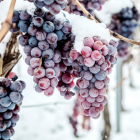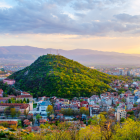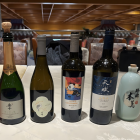
Khvanchkara and the Vineyards Above the Clouds
There is never a dull moment in Georgia, yet even seasoned Caucasus roamers do a double‑take when the road into Racha begins to coil skywards.
The Rioni River gurgles far below, snow‑pocked ridges squeeze the valley from both sides, and every switchback opens a new postcard of stone cottages and fruit orchards. Hidden in this high‑altitude fold, on a clutch of south‑facing terraces, with their tips amongst the clouds, lies the Khvanchkara micro-zone - two hillside hamlets, Khvanchkara and neighbouring Bugeuli.
The Khvanchkara micro-zone is a Protected Designation of Origin (PDO) that specifically refers to the area where a semi-sweet red wine of the same name, and a fascinating history to tell is produced.
A Land Apart
Khvanchkara, part of the wider region of Racha, sits in Georgia’s north‑west, just shy of the Greater Caucasus wall, 280 kilometres from the country’s capital, Tbilisi and a good four‑and‑a‑half‑hour drive unless you know the bends by heart. Height is its signature. Vineyards start at 450 metres and climb past 800 metres above sea level, a ceiling that keeps harvests late and acids fresh. Slate and crumbly limestone break through thin topsoil, rain tumbles in fast bursts from May to October; then a sharp continental winter seals in aromatics. The valley’s slender shape funnels breezes that whisk away humidity, an unsung antidote to rot in a place that still prefers unsprayed vines.
Khvanchkara Wine Through Six Centuries
Wine has soaked the local ledger since at least the fifteenth century, when local church accounts mention red wines from Racha. For most of its life the drink was rustic: a farmer picked late, crushed grapes in a wooden trough, let them bubble until the first snow, then carried the half‑fermented must into a cool shed where winter cold stalled the yeast. The result was sweet yet lively, the Georgian answer to Lambrusco long before anyone on the Italian peninsula thought to bottle fizz.
Local lore says the leap from farmhouse treat to national treasure came in 1943. Joseph Stalin, reliably nostalgic for his homeland, poured Khvanchkara at the Tehran Conference and later at Yalta. Stories say Churchill asked for a second glass, Roosevelt tried to buy a barrel, and Stalin ordered that the valley be surveyed to secure the supply. Soviet agronomists fenced off 62 hectares across two villages (Khvanchkara and nearby Bugeuli) and grouped the vineyards under one name. By the 1960s, the wine stood on every Kremlin banquet table, a sweet, garnet calling card labelled “The Red from the Mountains”.
Grapes of Small Renown
Khvanchkara rests on a twin act of grapes, Aleksandrouli and Mujuretuli, varieties so shy they rarely ripen elsewhere. Aleksandrouli brings scented red fruit – strawberry, raspberry, rosehip – while Mujuretuli adds blueberry depth, fine tannin, and a twist of black pepper. Pickers wait until September‑October, sometimes into early November, before the clusters achieve enough sugar to ferment to roughly 12 per cent alcohol and still leave a cushion of natural sweetness. There is no fortification and no artificial stop. Winter cold, plus a quick racking off the lees, slows the yeast to a crawl and traps a high amount of residual sugar. It sounds technical, but in the glass, it feels more like biting into a just‑baked berry tart where the pastry edge still carries a savoury whisper of smoke.
Old‑School Cellars, New‑Wave Minds
State monopoly ended with the Soviet Union, and family plots have crept back into the frame. The largest house, Royal Khvanchkara, owns 26 hectares, is open to the public for tours and tastings, and welcomes coaches, yet don’t just stop there.
A dirt lane in the Akhalsopeli end of the micro‑zone leads to the Tsulukidze family Marani, with buried qvevri under a low farmhouse, where Aleksandrouli and Mujuretuli from old terraces become tiny batches of Khvanchkara and other varietal bottlings. During our visit, our host insisted we taste from a just‑opened qvevri before we’d even taken our coats off. They are so passionate about the wines they produce.
Around the corner in Khvanchkara village, Aleko Sardanashvili’s homestead cellar pours an eye‑opening drier take on the region’s grapes alongside the celebrated semi‑sweet blend. Proof the valley can produce more than just dessert.
Visitors quickly discover that tastings here are rarely a formal appointment. A knock at any gate often earns you a plate of good local food and a glass (or two) filled to the rim. The language barrier quickly dissolves once you master one word… “Gaumarjos!” meaning cheers in the local tongue.

Left: Traditional wooden fermentation tanks inside the Royal Khvanchkara cellar.
Right: The Khvanchkara Wine Monument in Ambrolauri, marking the valley’s entrance.
Travelling from Tbilisi
Reaching Racha is easier than the horror stories suggest, at least for most of the journey. A fairly recent travel route option, the E60 motorway from Tbilisi, brings you to Kutaisi, the closest major city hub, within three hours. From there a freshly resurfaced road tracks the Rioni river upstream. Marshrutka minibuses run daily from Kutaisi bus station to the regional hub of Ambrolauri; check times locally, as schedules shift with season and weather. Hire cars give more freedom, especially if you want to pull in at the high Nakerala Pass for the panorama across the forests toward Shaori Lake, or to browse the roadside beekeepers selling jars of local mountain and chestnut honey on the way.
Ambrolauri, the valley’s main town and administrative centre, offers a scattering of guest-houses, a tidy central square and, jutting above the riverbank, a giant Khvanchkara Wine Monument. The airport, a single-storey cube with two to three flights from Natakhtari Airfield, Tbilisi, operating once or twice a week, makes an amusing photo but is only really convenient if the timings align.
From Ambrolauri, the village of Khvanchkara lies a gentle ten-kilometre drive west-north-west past local vineyards and plentiful stone-fruit orchards of plums, peaches, and apricots.
Planning Your Trip
Late September into October wears the valley best, where temperatures start to drop, walnut trees turn gold and smoke from the first wood‑burners perfumes the dusk. Many wineries will still be picking, so expect purple hands and invitations to throw a bucket of grapes onto the press. The Khvanchkara Wine Festival, usually in mid-October, lines the main street with trestle tables, folk trios, and enough bottled generosity to power a small republic.
Racha’s food table leans hearty. Order lobiani, a bean‑filled bread slicked with mountain butter. Or tenili, a string cheese stretched for hours around a wooden stick until it resembles silky ribbon. The headline act, however, is Rachuli lori (smoked bacon). Strips of pork belly, cured with local garlic and Svanetian salt, smoky yet sweet, are the perfect foil for the wine’s ripe fruit. The daring dip slices directly into their glass for a second, letting the sugar coat the fat before they devour.
Beyond the Vineyard
Should palate fatigue threaten, the region answers with distractions. The early 11th‑century Nikortsminda Cathedral (c.1010–1014), famed for its carved stone façades and vivid 16th–17th‑century frescoes, sits about a twenty-minute drive from Ambrolauri. Continue a short drive and you reach Shaori Lake, a 1950s high‑altitude reservoir cradled by the Nakerala Range, where you can swim, go out on a hired boat and try a bit of fishing in season. Local anglers cast for trout in the lake, and with luck, you’ll be grilling fresh fish by sundown.
Hikers push north into Upper Racha to the mountain resort of Shovi, known for its mineral springs (regional counts list sixteen) and alpine meadows on the way to Buba Peak. Later in the year, the same high ground draws ski tourists from Oni and Ghebi when snow lies deep on the ground. If the cold is your thing, Winters are quieter yet truly magical - snow settles across the valley and dusts the vines, setting a scene not dissimilar to a holiday greeting card. Ski tracks etch the slopes above the town, while cellars glow with the warmth of a wood-burner.
Pocket‑Sized Trivia
1
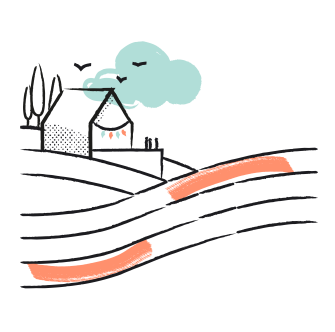
Tiny but Tenacious Terroir
The Khvanchkara PDO’s legally defined vineyard area covers just shy of 65 hectares, minute by classic Bordeaux standards. Khvanchkara PDO is roughly one‑twentieth the size of Margaux AOC.
2

Wine Worthy of Orbit
Local lore claims that Khvanchkara is ‘fit for cosmonauts,’ with valley storytellers insisting a bottle once hitched a ride on a Soviet space mission. The voyage varies depending on who you speak to, and proof pending, but the tale pours freely, especially after a few glasses.
3
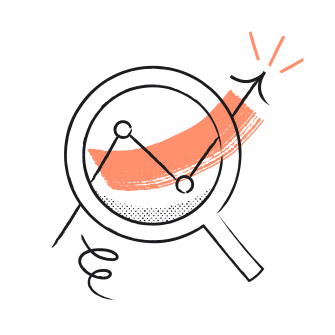
A Grape All Its Own
Researchers at Georgia’s National Wine Agency have reported that Aleksandrouli appears genetically distinct from known European varieties, despite rumours of a Burgundian cousin.
4
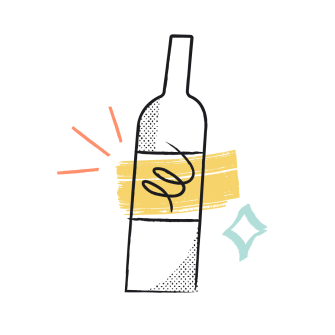
Sweetness Written by Winter
Because of the winter cold, not fortification, halts fermentation, the sweetness of Khvanchkara varies by vintage; most bottlings land in the high 20s to low 40s grams per litre.
5

Healing Hearts, Georgian Style
Local folklore claims the wine cures “heartache of the soul”. Science stops short of proof, but few leave without a smile. Locals toast Khvanchkara to love and good health, and joke that it mends a heavy heart faster than any medicine.
What’s Not to Love?
Khvanchkara is not the most polished wine on earth, yet the first sip, bright with mountain berries and edged by alpine freshness, anchors a memory long after your luggage reaches home. Pair that taste with the sight of dawn steam rising from terraced vines and the echo of river water against limestone, and you begin to understand why Georgians guard this valley with almost parental pride.
For the traveller who likes their detours steep and their stories authentic, Racha offers both in concentrated measure. Come for the wine, stay for the ham and hymns, leave with the conviction that the world’s great bottles are not always found in grand châteaux. Sometimes they wait at the end of a bendy road, served from a chipped jug by someone who pronounces your name better than you do theirs, and somehow it is perfect.
Related Articles
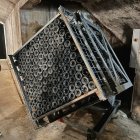
A 48-Hour Getaway in Champagne: The Ultimate Tasting Journey
By Paul Declerck
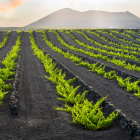
The Rise of Volcanic Wine
By Sean Wright
